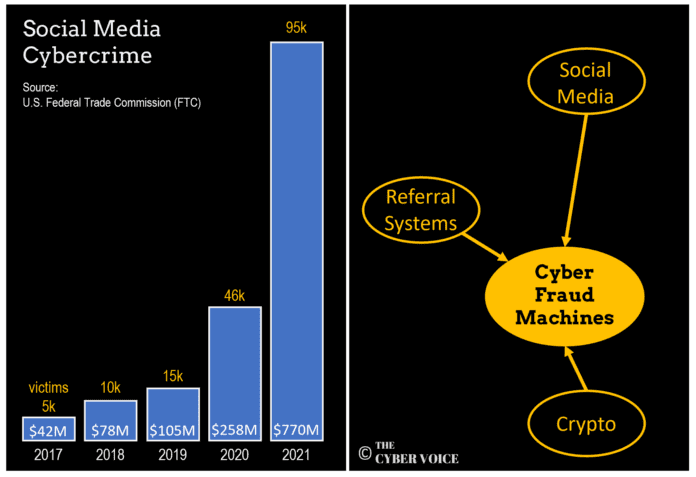FinTelegram issued a press release warning against exploding cybercrime numbers due to social media and cryptocurrencies. Scammers find victims for their investment schemes primarily through fraudulent crypto campaigns on Google and social media. Cybercrime organizations combine the power of social media with the new capabilities of cryptocurrencies to build super-efficient cyberfraud machines.
Fraudulent crypto campaigns such as Bitcoin Revolution, Bitcoin Evolution, or Bitcoin Prime present themselves as “get-rich-quickly” means in Google Ads and in ads and posts on social media. Additionally, they include referral systems where customers use a referral link to recruit new customers and receive commissions from the new deposits. This leads to victims victimizing their online friends.
The U.S. Federal Trade Commission (FTC) confirms that Facebook, Instagram, and other social media platforms are a gold mine for online fraudsters. The latest consumer protection data report shows a sharp spike in online fraud schemes, particularly crypto schemes. More than 95,000 U.S. consumers reported about $770 million in losses to fraud initiated on social media platforms in 2021, up from $258 million in 2020. The FTC data suggest that social media was far more profitable to scammers in 2021 than any other method of reaching people.
Thus, since 2017, the number of U.S. victims, as well as their losses in online scams, has increased more than 18-fold. Cybercrime losses initiated on social media account for about 25% of all reported losses to fraud in 2021. Besides social media, crypto-related scams have contributed to the massive surge in fraud reports, the FTC data suggest.
No data is currently available for Europe and Asia for 2021. However, we can assume that the ratio figures also apply to Europe. This means that financial cybercrime powered by crypto and social media is booming. 25% of all online fraud cases in Europe and Asia may also be initiated via the “gold mine” of social media.





